 | Parts of these pages on USB Networking are a cooperation with Parallel Technologies, the creator/ inventor/ developer of the DirectParallel® technology licensed to Microsoft for the Direct Cable Connection (DCC) feature in Windows 95/98/2000/ME/XP ( supplier of the fast DirectParallel® cable and of USB connection cables). |  |
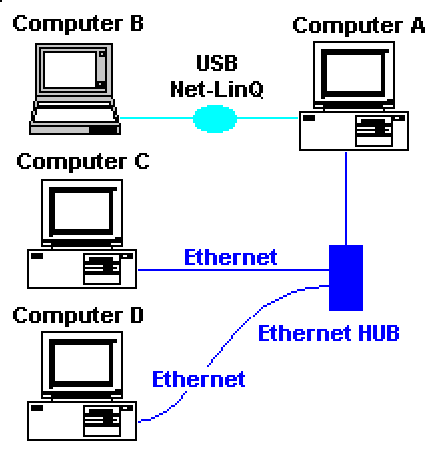 | You can connect your USB network of Windows98 or ME, Windows 2000 and WindowsXP systems to an Ethernet network, resulting to a mixed network with Ethernet and USB network adapters. For Windows XP, there is an easier, better solution : – Windows XP Network Bridge |
The simple setup using the “Bridge Protocol” (on Windows9x/2000) or using a
“Network Bridge” (Windows XP only) will enable all systems to share data :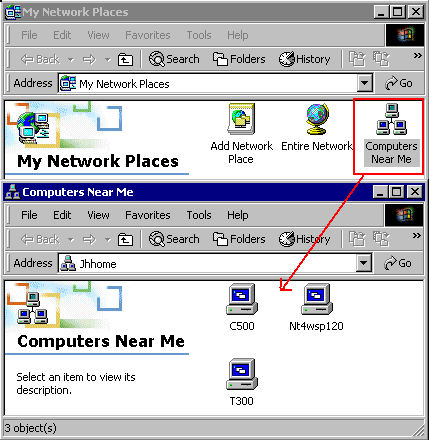
This is the configuration of this network: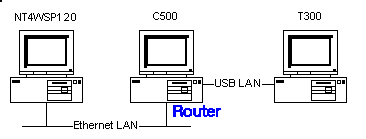
The system “C500” has now to act as a router between the different network segments.
The installation of the “Bridge Protocol” allows the communication via NetBEUI.
For a communication via TCP/IP, an advanced setup is now required.
Before continuing, please make sure that you have sufficient knowledge of TCP/IP configurations.
1) Both Windows98/ME and Windows2000 support the Automatic IP-generation, which would
result in this example on the Router (the Windows 2000 system “C500”) to the following
IP-addresses assigned ( report generated by “ipconfig“):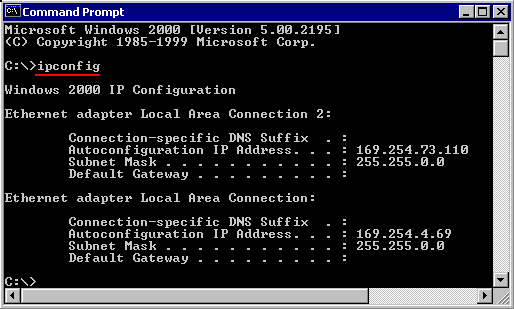
The Automatic IP-generation has assign both IP-addresses of the SAME subnet 169.254.x.x,
but for routing, the IP-addresses need to be on different subnets.
It is now required to configure TCP/IP manually.
I used for my setup the IP-values below: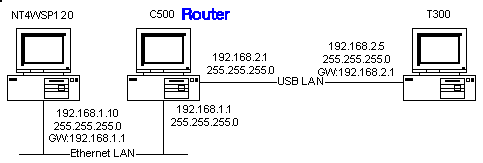
using the subnet: 192.168.1.x for the Ethernet LAN and 192.168.2.x for the USB LAN:
The “router” system, Ethernet LAN adapter, TCP/IP-properties:
– IP-address: 192.168.1.1
– Subnet mask: 255.255.255.0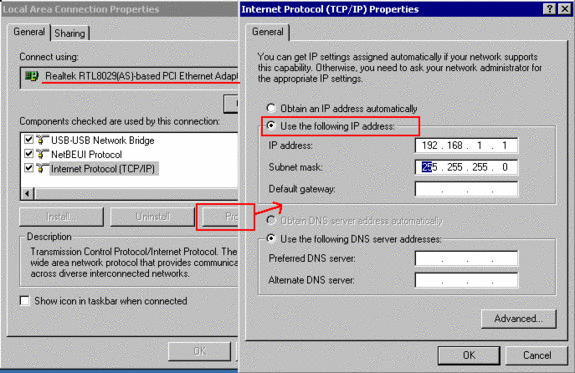
The “router” system, USB LAN adapter, TCP/IP-properties:
– IP-address: 192.168.2.1
– Subnet mask: 255.255.255.0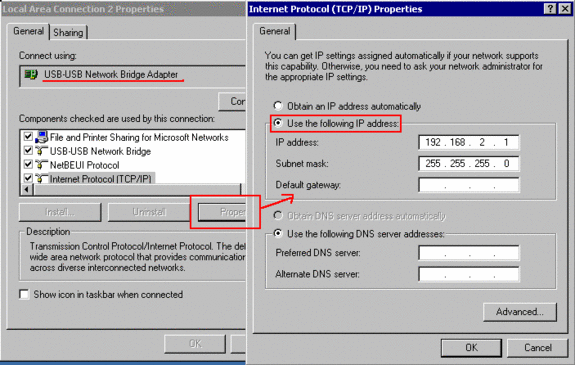
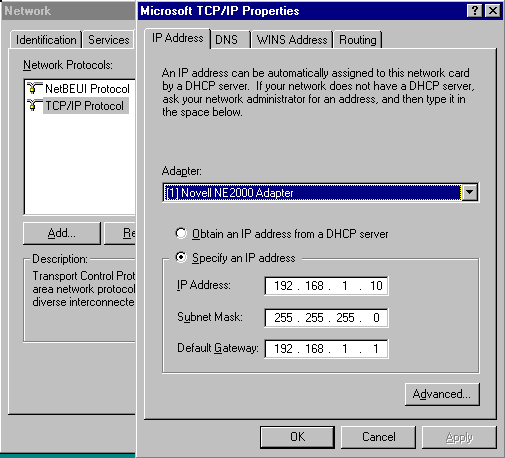 | On the Systems on the Ethernet LAN (in this example: NT4WSP120) (subnet: 192.168.1.x), I need to define the Ethernet adapter in the “Router“-system (at 192.168.1.1) to be the “Default Gateway“. On the Systems on the USB-LAN (subnet: 192.168.2.x), I need to define the USB-adapter in the “Router“-systems (at 192.168.2.1) to be the “Default Gateway“ |
After making the change, test the communication using the TCP/IP PING :
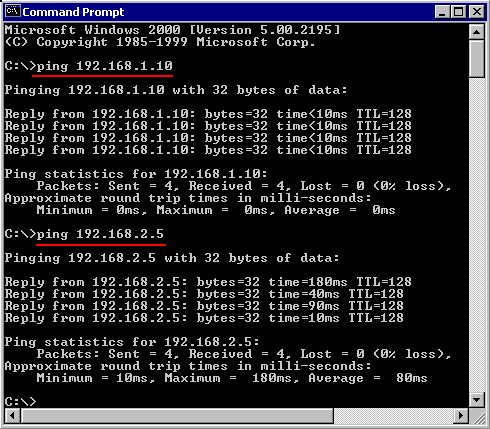 | make sure, that from the Router-system you can “ping” (and get “Reply from..”) all systems on both the Ethernet LAN Segment and the USB-LAN segment. |
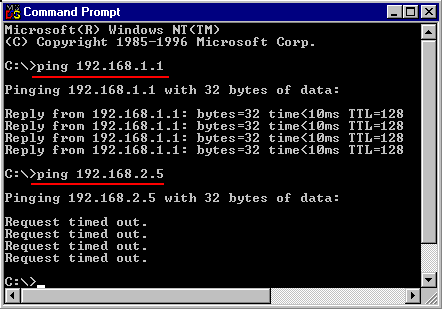 | make sure, that from the systems on the Ethernet Segment, that you can “ping” the router-system and the systems on the USB-LAN. make sure that from the systems on the USB Segment, that you can “ping” the router-system and the systems on the Ethernet segment. If you do not get a reply (“Request timed out“), make sure that the “Default Gateway“ address is properly defined. |
And you need to enable on the Router-system the “IP-forwarding”:
– Windows98/ME
– Windows 2000
A note on some special configurations:
if one of the systems has a modem and connects to the Internet: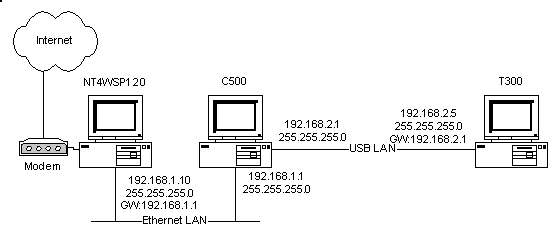
That connection will reset the “Default Gateway” to become the modem, so any connection
to systems on the other network segment will be lost (and systems on the other network segment
will loose the connection with this system).
To avoid that, use the “ROUTE” -command instead of defining the “Default Gateway”
(as shown in : TCP/IP and WAN ).
Another possible configuration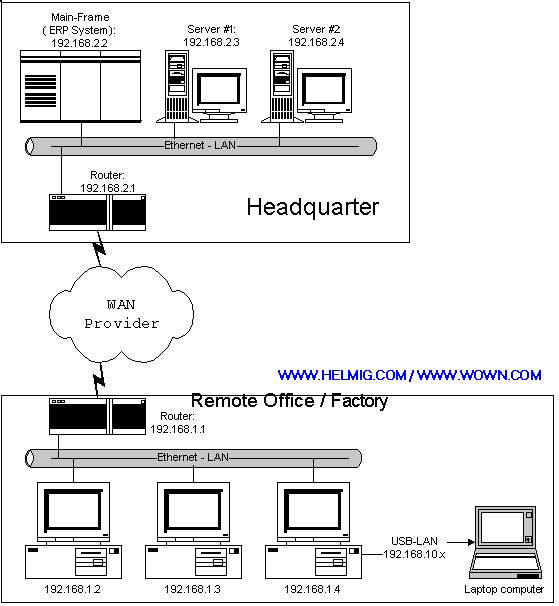
If you are using a USB-network to connect your notebook in the office to an PC
connected to the office network and you like to access from your notebook a server
on the Ethernet LAN or a system via the WAN, then you will need the cooperation of
the Network Administrator (lucky, if you are it yourself ! ), because he will need:
– assign to you a subnet to be used for your USB-network (in the example: 192.168.10.x)
– add to the local servers a ROUTE-command, so that the servers know to use the
desktop-system with both the Ethernet and USB adapter (in this example: 192.168.1.4) as
a router to communicate with the notebook.
– if you like to use the WAN, also the systems in the headquarter need to be
configured for the subnet of your USB-LAN segment.



